Zone
Crash of a Fairchild C-123K Provider in the Denali National Park: 3 killed
Date & Time:
Aug 1, 2010 at 1500 LT
Registration:
N709RR
Survivors:
No
Schedule:
Palmer - Unalakleet
MSN:
20158
YOM:
1954
Crew on board:
2
Crew fatalities:
Pax on board:
1
Pax fatalities:
Other fatalities:
Total fatalities:
3
Circumstances:
The pilot, co-pilot and the passenger departed on a day VFR cross country flight in a large, 1950's era former military transportb category airplane to deliver cargo. The pilot did not file a flight plan, and had no communication with any air traffic control facility during the flight. While en route, witnesses saw the airplane fly slowly across a valley near the entrance of a national park, which was not the intended route of flight. The airplane suddenly pitched up, stalled, and dived into wooded terrain within the park. Two pilot-rated witnesses said the engines were operating at the time of the accident, and the landing gear was retracted. An on-scene examination of the burned airplane structure and engines revealed no evidence of any preaccident mechanical deficiencies, or any evidence that the cargo had shifted during the flight. A former military pilot who had experience in the accident type airplane, stated that the airplane was considered unrecoverable from a stall, and for that reason, pilots did not typically practice stalls in it. He also indicated that if a problem was encountered with one of the two piston engines on the airplane, the auxiliary jet engine on the affected side should be started to provide additional thrust. Given the lack of mechanical deficiencies discovered during postaccident inspection, the absence of any distress communications, and the fact that neither of the two auxiliary jet engines had been started to assist in the event of a piston engine malfunction, it is likely the pilot allowed the airplane to lose airspeed and enter a low altitude stall from which he was unable to recover.
Probable cause:
The pilot's failure to maintain adequate airspeed to avoid a low altitude stall, resulting in a loss of control and collision with terrain.
Final Report:
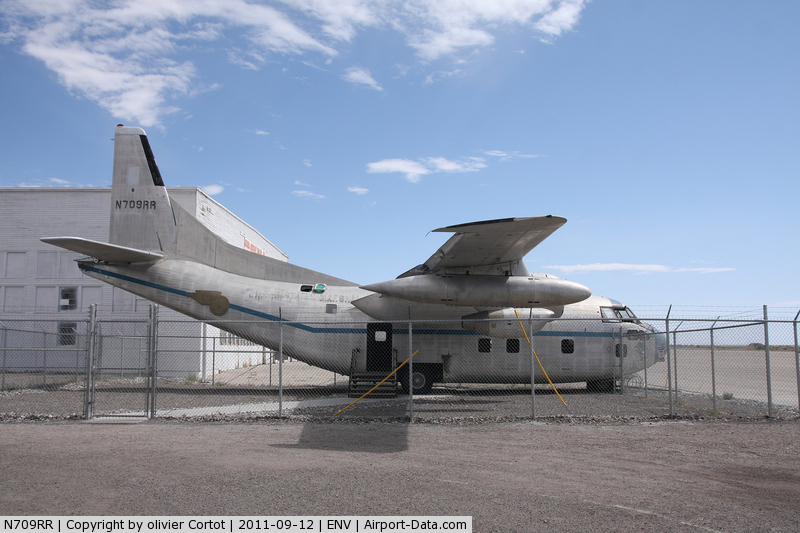

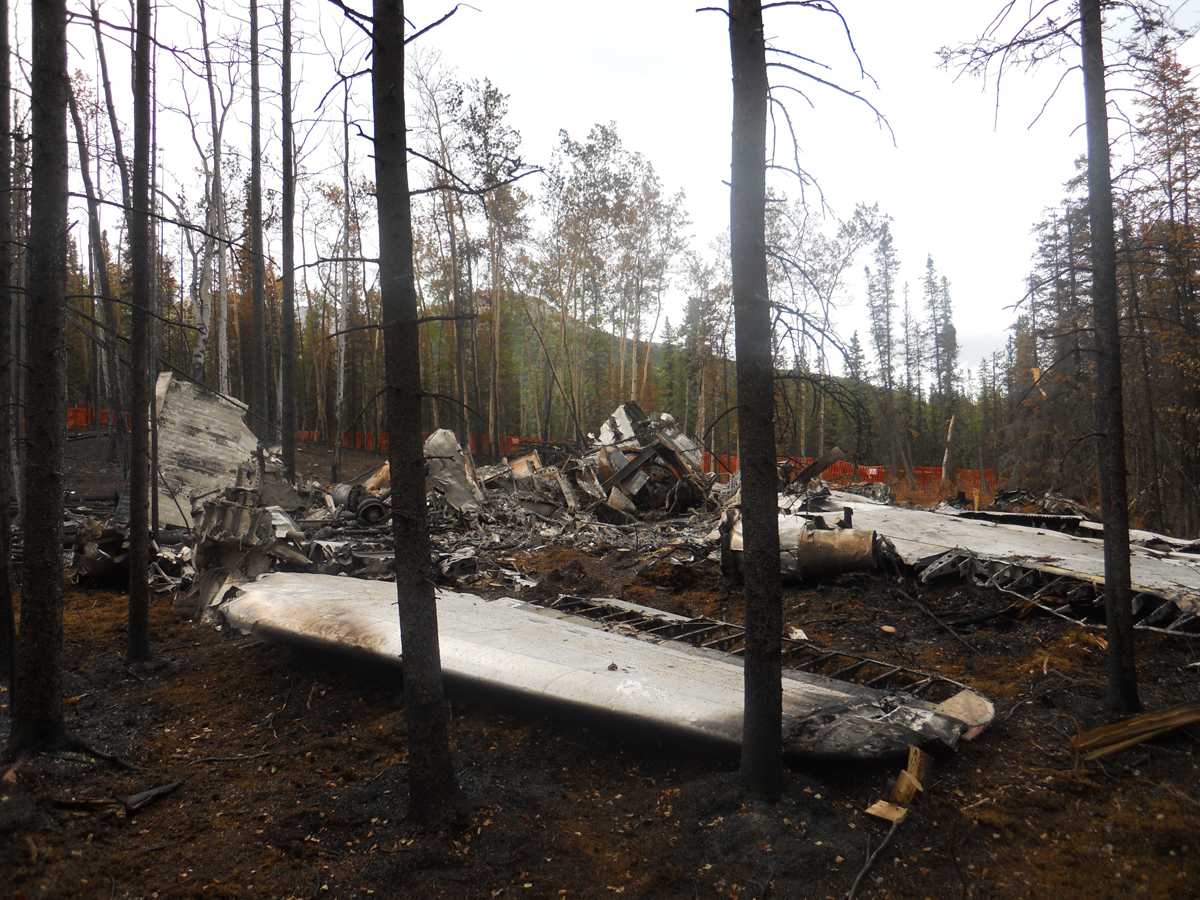
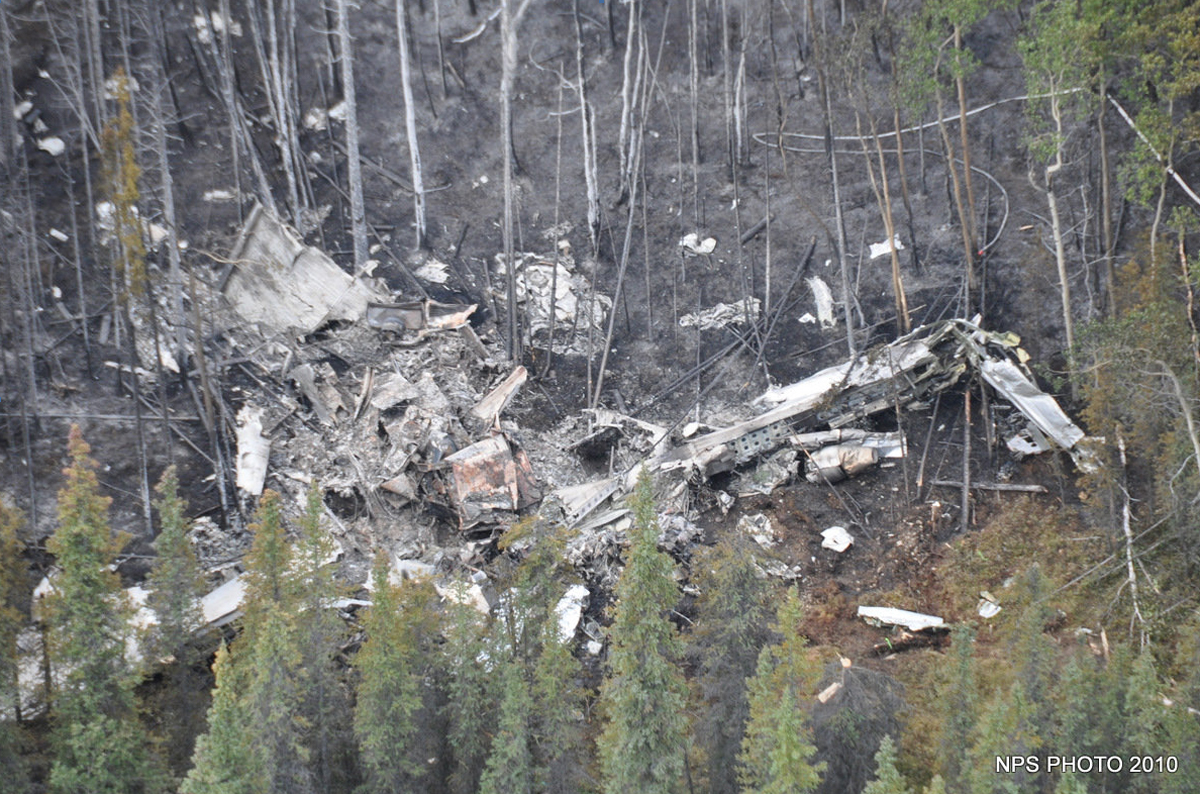
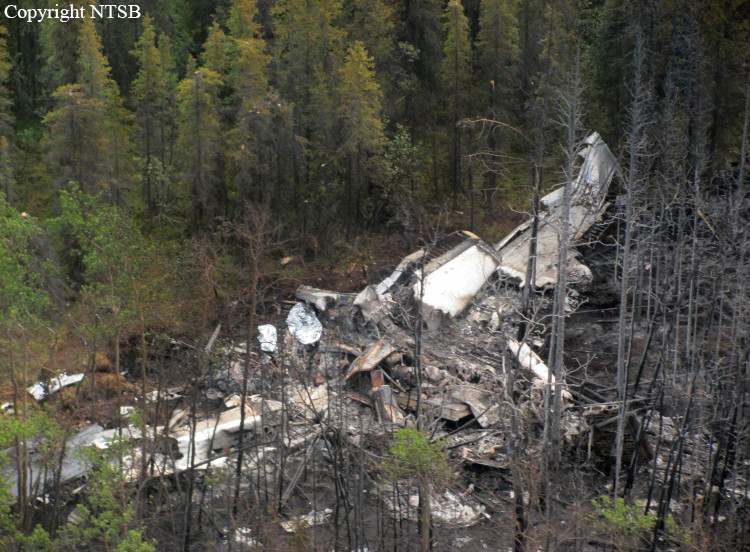
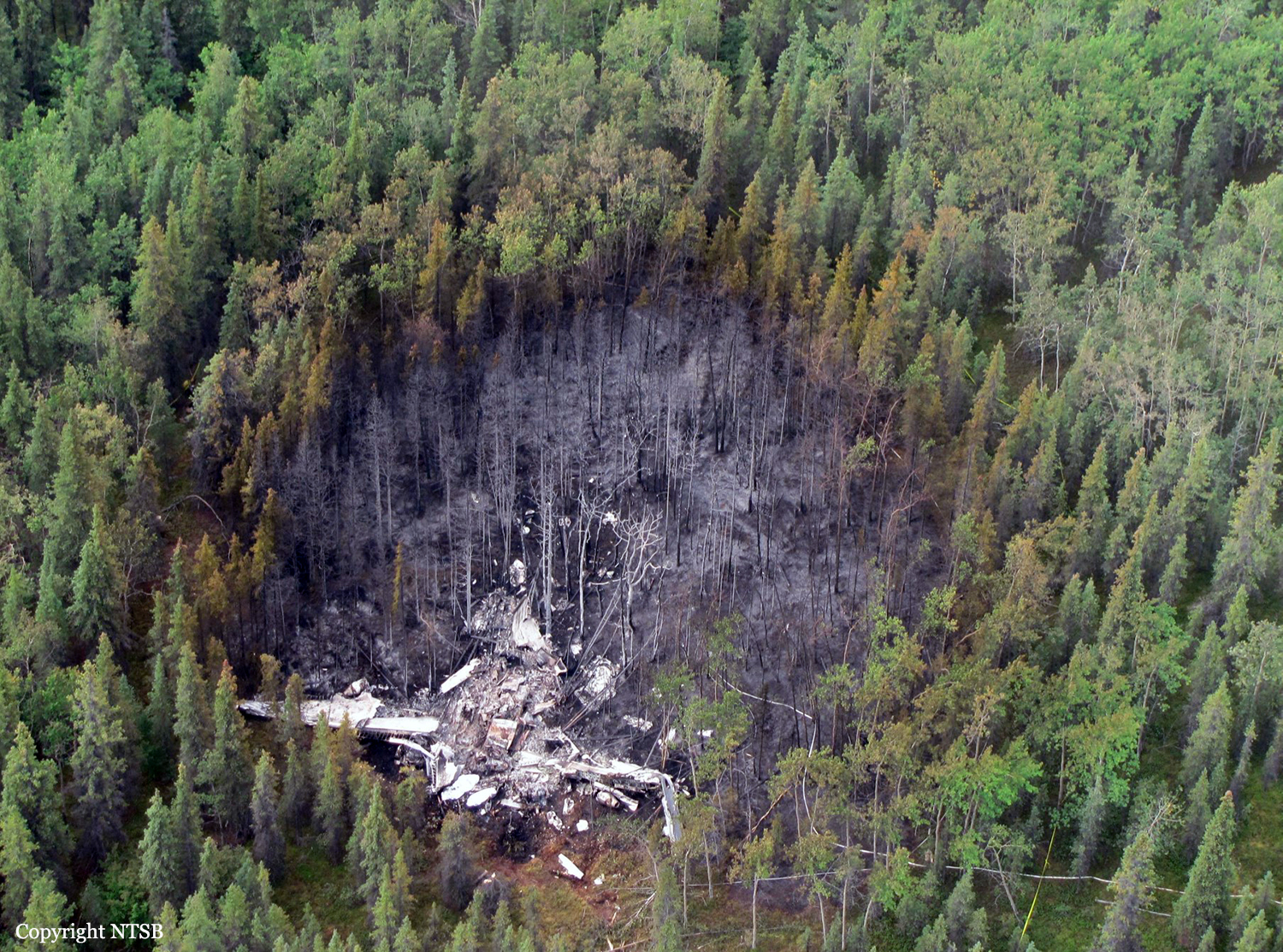


Crash of a Douglas DC-6B in Nixon Fork Mine
Date & Time:
Jan 2, 1998 at 1526 LT
Registration:
N861TA
Survivors:
Yes
Schedule:
Nixon Fork Mine - Palmer
MSN:
43522
YOM:
1952
Crew on board:
3
Crew fatalities:
Pax on board:
0
Pax fatalities:
Other fatalities:
Total fatalities:
0
Captain / Total hours on type:
16000.00
Aircraft flight hours:
46626
Circumstances:
During the takeoff roll, while passing 45 knots indicated airspeed, ice formed between the inner and outer panes of the airplane's windshield, obscuring the crew's vision. The flight crew aborted the takeoff, the airplane drifted off the left side of the snow covered runway, and caught fire. The crew reported the airplane and windshield were cold soaked and the temperature was -10 degrees Fahrenheit. The windshield anti-ice system blows air from a combustion heater between the windshield glass panes. The air source for the heater, once the airplane has forward airspeed, is two leading edge wing scoops. The crew told the NTSB investigator that the taxi time was too short for the windshield to warm up, and that during the taxi, snow was circulated around the airplane and into the wing scoops.
Probable cause:
The ingestion of snow into the windshield anti-ice system, and the resulting obscured windshield which made runway alignment not possible. Factors associated with this accident were the cold windshield, the reduced performance of the windshield anti-ice because of the short taxi by the crew, and the insufficient information on the system provided by the manufacturer.
Final Report:
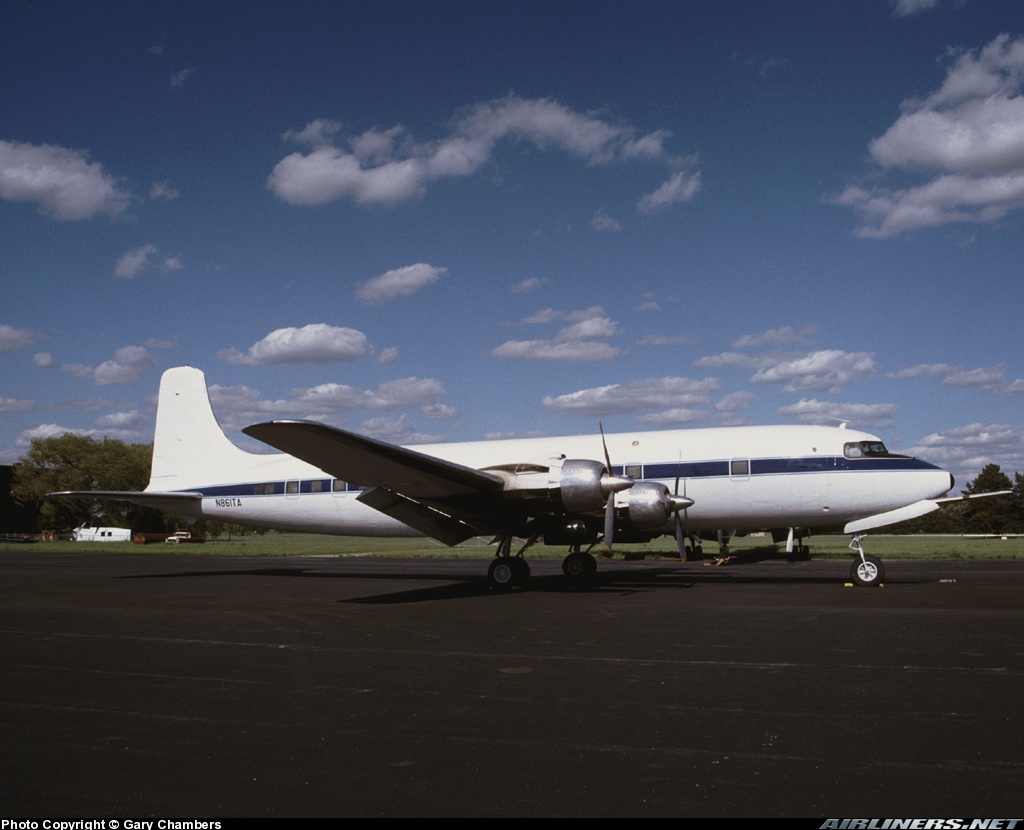

Crash of a De Havilland DHC-4A Caribou in Lime Village: 2 killed
Date & Time:
Mar 20, 1986 at 1330 LT
Registration:
N539Y
Survivors:
No
Schedule:
Palmer - Lime Village
MSN:
197
YOM:
1964
Crew on board:
2
Crew fatalities:
Pax on board:
0
Pax fatalities:
Other fatalities:
Total fatalities:
2
Aircraft flight hours:
12159
Circumstances:
Witnesses observed the aircraft on final approach with its gear down then the nose pitched up. The aircraft rolled left and crashed into trees. The aircraft's cockpit, cabin, engine nacelles, cargo and portions of the wings were destroyed by post-impact fire. Post accident examination of the aircraft revealed the landing gear was in the up and locked position and the flaps were at 30°. This is consistent with a go-around configuration. No mechanical malfunction/failure could be determined. The aircraft had a restricted category airworthiness certificate. The cargo area contained two fuel tanks and assorted items (oil stove, tools, 55 gallon drum and hoses). The pilot was type rated in this aircraft. The runway length listed in the Alaska supplement was 1,000 feet longer than the actual runway length. The runway was glazed with ice. Both occupants were killed.
Probable cause:
Occurrence #1: loss of control - in flight
Phase of operation: approach - vfr pattern - final approach
Findings
1. (f) in-flight planning/decision - improper - pilot in command
2. (c) airspeed (vs) - improper - pilot in command
3. (c) stall - inadvertent - pilot in command
4. (f) altitude - inadequate - pilot in command
5. (f) go-around - attempted - pilot in command
----------
Occurrence #2: in flight collision with terrain/water
Phase of operation: descent - uncontrolled
Phase of operation: approach - vfr pattern - final approach
Findings
1. (f) in-flight planning/decision - improper - pilot in command
2. (c) airspeed (vs) - improper - pilot in command
3. (c) stall - inadvertent - pilot in command
4. (f) altitude - inadequate - pilot in command
5. (f) go-around - attempted - pilot in command
----------
Occurrence #2: in flight collision with terrain/water
Phase of operation: descent - uncontrolled
Final Report:
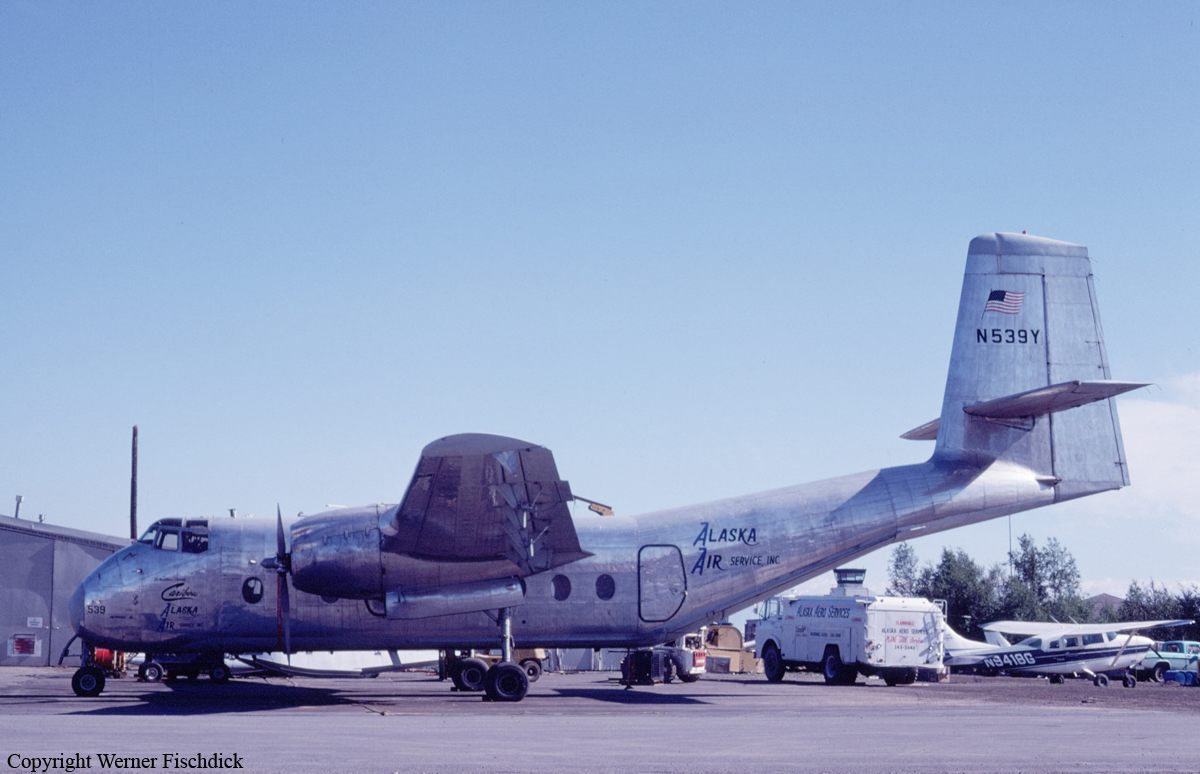
Crash of a De Havilland DHC-2 Beaver in Palmer: 1 killed
Date & Time:
Jun 8, 1976 at 1645 LT
Registration:
N5141G
Survivors:
Yes
Schedule:
Palmer - Palmer
MSN:
468
YOM:
1953
Crew on board:
1
Crew fatalities:
Pax on board:
2
Pax fatalities:
Other fatalities:
Total fatalities:
1
Captain / Total hours on type:
50.00
Circumstances:
Few minutes after takeoff from Palmer, the pilot elected to gain height when the single engine airplane struck a mountain ridge and crashed. A passenger was killed while both other occupants were injured. The aircraft was destroyed.
Probable cause:
Controlled flight into terrain after the aircraft was unable to outclimb mountain ridge. The following contributing factors were reported:
- Exercised poor judgment,
- Misjudged distance, speed and altitude,
- Misused or failed to use flaps,
- High obstructions.
- Exercised poor judgment,
- Misjudged distance, speed and altitude,
- Misused or failed to use flaps,
- High obstructions.
Final Report:
Crash of a Curtiss R5C-1 Commando near Palmer
Date & Time:
Jul 10, 1946
Registration:
39585
Survivors:
Yes
Schedule:
Westover - Westover
MSN:
80
YOM:
1944
Crew on board:
7
Crew fatalities:
Pax on board:
0
Pax fatalities:
Other fatalities:
Total fatalities:
0
Circumstances:
Enroute, an engine caught fire. The crew tried to extinguish the fire, without success. Due to the situation, all seven occupants decided to bail out and abandoned the aircraft that dove into the ground and crashed in flames in a field. All seven crew members were unhurt while the aircraft was destroyed. It was confirmed that the fire spread from the engine to the wing that detached shortly later, causing the aircraft to crash.
Probable cause:
Engine fire.



